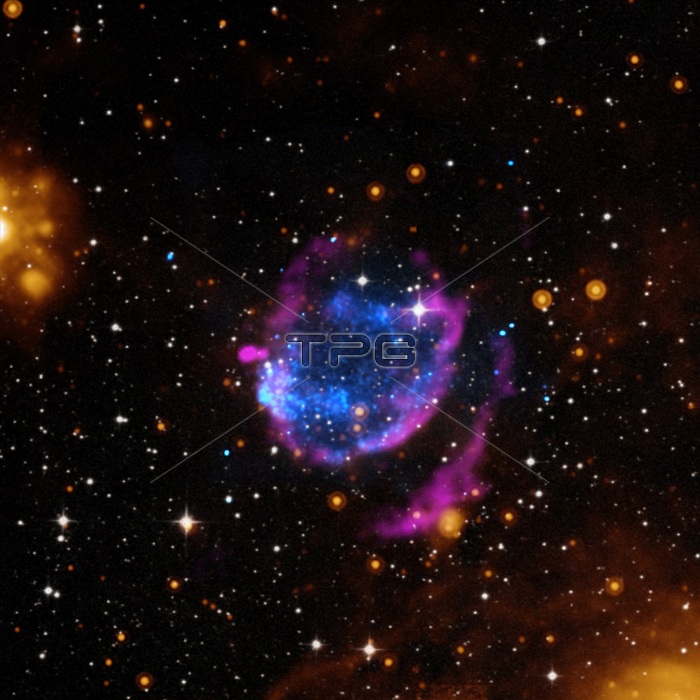
Supernovas are the spectacular ends to the lives of many massive stars. These explosions, which occur on average twice a century in the Milky Way, can produce enormous amounts of energy and be as bright as an entire galaxy. As remains of the shattered star are hurled into space, the debris field called the supernova remnant expands and carries the material it encounters along with it. Astronomers have found that the supernova remnant in this image, known as G352.7-0.1 (or G352 for short), has swept up a remarkable amount of material, equivalent to about 45 times the mass of the Sun. Another atypical trait of G352 is that it has a very different shape in radio data compared to that in X-rays. Most of the radio emission is shaped like an ellipse, contrasting with the X-ray emission that fills in the center of the radio ellipse. This image is a new composite of G352 that contains X-rays from NASA's Chandra X-ray Observatory in blue and radio data from the National Science Foundation's Karl G. Jansky Very Large Array in pink. These data have also been combined with infrared data from the Spitzer Space Telescope in orange, and optical data from the Digitized Sky Survey in white.
| px | px | dpi | = | cm | x | cm | = | MB |
Details
Creative#:
TOP22314573
Source:
達志影像
Authorization Type:
RM
Release Information:
須由TPG 完整授權
Model Release:
N/A
Property Release:
No
Right to Privacy:
No
Same folder images:

 Loading
Loading